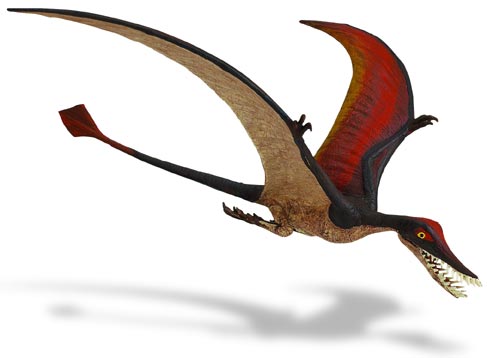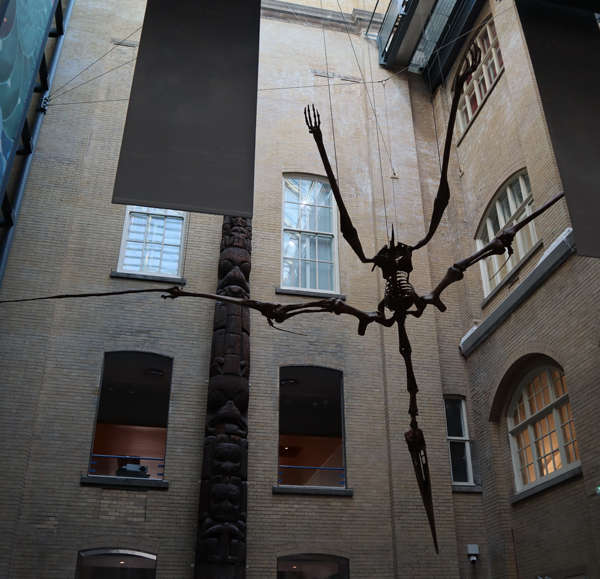Pterosaur bone fossils show some remarkable adaptations for powered flight. The bones were light, air-filled and often they had extremely thin walls. The Pterosauria comprises the first vertebrates to have evolved powered flight. The wings of pterosaurs were formed by a membrane of skin and tissue that stretched from the ankles to an enormous fourth digit on the hand. Their evolutionary origins remain unclear. Some palaeontologists postulate that the first flying pterosaurs evolved during the Middle Triassic.
To read an article about the possible ancestry of the Pterosauria: Unravelling the Ancestry of the Pterosaurs.

The shape of the pterosaur wing and evidence of wing membranes. Picture credit: Everything Dinosaur.
Picture credit: Everything Dinosaur
The image (above) shows the shape and the anatomy of the pterosaur wing. This is a photograph of an exhibit on display at the Manchester Museum of Natural History. We suspect that this is a cast. The pterosaur genus represented by this exhibit is probably Rhamphorhynchus. The thin and delicate wing bones can be clearly observed.
The picture (above) shows a Rhamphorhynchus pterosaur model. It is a long-tailed flying reptile. The figure is from the Wild Safari Prehistoric World model range.
To view the Wild Safari Prehistoric World range: Safari Ltd Dinosaur and Prehistoric Animal Models.
Pterosaur Bone Structure
Pterosaur bones were lightweight but strong. Their skeletons show a number of adaptations for powered flight. For example, they possessed large, keeled breastbones that anchored powerful flight muscles. The bones were hollow and air-filled similar to those of birds. The bone walls were extremely thin.

A close-up view of the thin-walled and hollow pterosaur bone model on display at the Frankfurt Museum of Natural History. Picture credit: Everything Dinosaur.
Picture credit: Everything Dinosaur
The picture (above) shows the internal structure of a pterosaur bone. It is probably a cast. The bone contains struts that help to strengthen it, but most of the internal space would have been filled with air. The walls of the bone are extremely thin. The large notch on the underside would have been for muscle attachment. Pterosaur bones provide a proportionately higher muscle attachment surface area compared to most other reptiles.
Picture credit: Everything Dinosaur
Visit the award-winning Everything Dinosaur website: Dinosaur and Pterosaur Models and Toys.








Leave A Comment